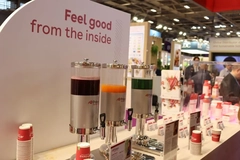EFSA Finds Insufficient Evidence for Safety of Heme Iron

The present opinion deals only with the safety and bioavailability of a particular source of iron. The safety of iron, in terms of amounts that may be consumed, is outside the remit of this Panel.
28 Apr 2010 --- Following a request from the European Commission to the European Food Safety Authority (EFSA), the Panel on Food Additives and Nutrient Sources added to Food (ANS) was asked to evaluate the safety of heme iron (blood peptonates) when added for nutritional purposes as a source of iron to food for the general population, including food supplements, and the bioavailability of iron from this source.
The present opinion deals only with the safety and bioavailability of a particular source of iron. The safety of iron, in terms of amounts that may be consumed, is outside the remit of this Panel.
The chemical form of iron is a main factor affecting its bioavailability. The Panel concluded that iron from heme iron (blood peptonates) is bioavailable and absorbed to a significantly higher extent than iron from non-heme sources. The bioavailability of iron from heme iron sources may be 2- to 7-fold higher than that of iron from non-heme sources.
The Panel is aware of the fact that heme iron is a constituent of the normal human diet and also an endogenous body constituent.
The petitioner indicates that hemoglobin is used worldwide as a food ingredient without any restrictions on its use or application and that the heme iron (blood peptonates) preparation of the present opinion has a substantial equivalence with porcine hemoglobin or with the heme iron present in red meat or liver.
The petitioner justifies the absence of toxicological data on the basis that the product is substantial equivalent to porcine haemoglobin, and/or the heme iron present in red meat or liver, which are part of the regular human diet.
Thus, no data on the toxicity of heme iron (blood peptonates) were provided by the petitioner except those from an acute toxicity study. This study revealed that the acute toxicity of heme iron (blood peptonates) in rats was low, with an LD50 greater than 2500 mg product/kg of bw, but the Panel notes that this study is not suitable to evaluate the safety in use of heme iron (blood peptonates) as a source of iron for the general population including food supplements.
The Panel noted that one study using the Comet assay reported that hemoglobin and hemin induced DNA damage in cells in vitro, and that epidemiological and animal model studies suggest that a high intake of heme iron, present in red meat, may be associated with an increased risk of colon cancer.
The recommended daily dose of heme iron (blood peptonates) proposed by the petitioner amounts to 2 g heme iron (blood peptonates) which is equivalent to 20 mg of elemental iron. The petitioner also indicated that they consider the maximum recommended daily intake to be 4.5-5 g heme iron (blood peptonates) which would be equivalent to 45-50 mg of elemental iron if it behaved like inorganic iron.
The Panel noted that these use levels of heme iron (blood peptonates) proposed by the petitioner result in exposure to elemental iron at levels that are higher than the guidance value of 17 mg/day for supplemental intake of non-heme iron proposed by the EVM, although they are in line with the Provisional Maximum Tolerable Daily Intake (PMTDI) value for iron of 0.8 mg/kg bw/day (50 mg/day for a 60 kg person) proposed by JECFA.
Overall, given:
1. that the use levels of heme iron (blood peptonates) proposed by the petitioner result in exposure to elemental iron at levels that are higher than the guidance value of 17 mg/day for supplemental intake of non-heme iron proposed by the EVM, although they are in line with the Provisional Maximum Tolerable Daily Intake (PMTDI) value for iron of 0.8 mg/kg bw/day (50 mg/day for a 60 kg person) proposed by JECFA,
2. the significantly increased bioavailability of iron from heme iron as compared to iron from non-heme iron sources,
3. that epidemiological and animal model studies suggest that a high intake of heme iron may be associated with an increased risk of colon cancer,
4. the absence of genotoxicity data on heme iron (blood peptonates) but the positive results reported for hemoglobin and hemin in a Comet assay in cells in vitro,
5. the absence of subchronic, reproductive, developmental, long-term toxicity and carcinogenicity data on heme iron (blood peptonates),
The Panel concludes that the available data are insufficient to demonstrate the safety of the proposed use and use levels of heme iron (blood peptonates) as a source of iron for nutritional purposes in foods intended for the general population, including food supplements.












